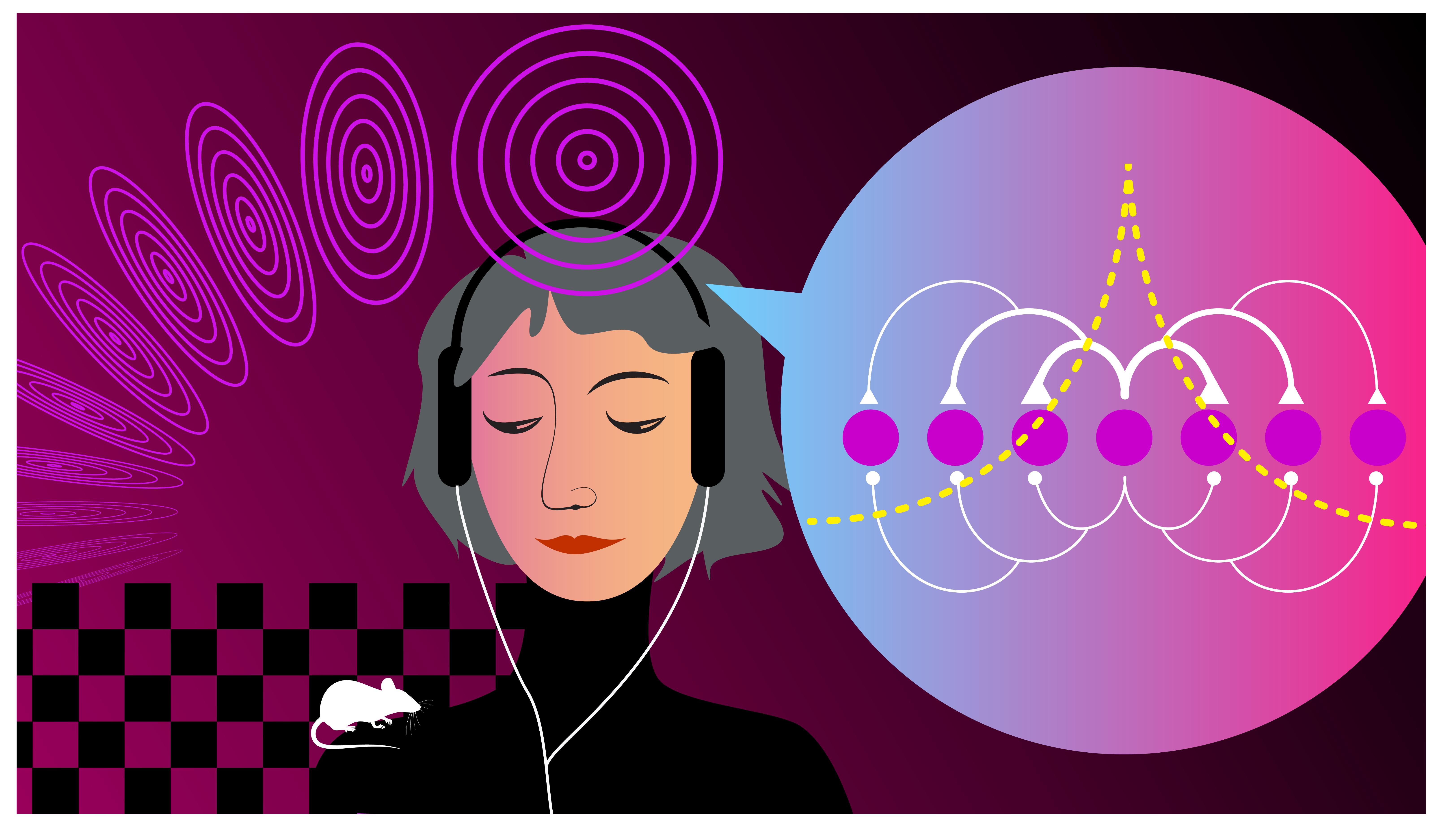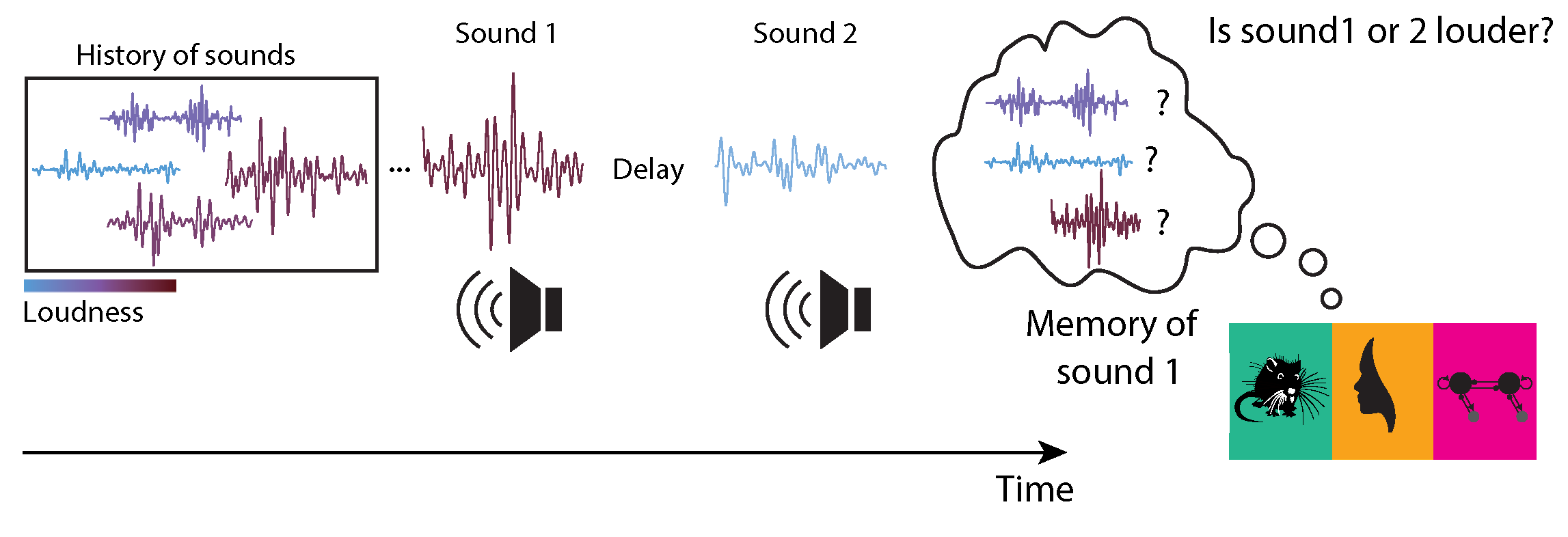
Network model unifies recency and central tendency biases
Researchers uncover interrelation between short-term history and contraction bias
Neuroscientists have revealed that recency bias in working memory naturally leads to central tendency bias, the phenomenon where people’s (and animals’) judgements are biased towards the average of previous observations. Their findings may hint at why the phenomenon is so ubiquitous.
Researchers in the Akrami Lab at the Sainsbury Wellcome Centre at UCL and the Clopath Lab at Imperial College London developed a network model with a working memory module and another accounting for sensory histories. The study, published in eLife, describes how the model shows neural circuits can give rise to both recency and central tendency biases at the same time through a single mechanism.
“Psychologists first observed the central tendency bias over a century ago, but it was assumed to be a separate phenomenon to recency. Our results imply that these two biases are more related than previously thought,” said Vezha Boboeva, Senior Research Fellow at the Sainsbury Wellcome Centre and first author on the paper.

Central tendency bias, also known as contraction bias, is a ubiquitous phenomenon. Imagine you are shown a bar of a given length and asked to reproduce that same bar, recalled from your memory. What we tend to do is to misremember the length, based on the bar's size, recalling longer bars as shorter and shorter bars as longer. Therefore, we judge the length of the bar as closer to the mean of the range than it is in reality.
The phenomenon also occurs in other animals, including non-human primates and rodents, and happens with other modalities too, such as sound amplitudes and frequencies. This bias is believed to be a brain strategy for processing the statistical patterns of sensory information, formulated through Bayesian computation.
Recency bias, also known as short-term history bias, occurs when you fail to remember a given stimulus because the memory from the previous stimulus is still lingering in your mind.

To understand the neural processes that underpin both central tendency and recency biases, neuroscientists at SWC and Imperial College London studied the phenomena in a neural network model, highly inspired by prior results from rodents and human working memory experiments.
“My previous postdoctoral research showed that deactivating the posterior parietal cortex (PPC) attenuated contraction bias in rats performing a working memory task. We also saw that biases due to lingering memories of previous trials were reduced when PPC was deactivated, suggesting that these two mechanisms may be linked to each other,” explained Athena Akrami, Group Leader at SWC and corresponding author on the paper.
Building on this research, Boboeva and team developed a network model that replicated the previous experimental findings. In the model, short-term history effects occur due to inputs from the PPC that has a slower integration timescale as well as firing rate adaptation.
“The model shows that once you make working memory errors because of such lingering memories, contraction bias emerges naturally, without the need to make any other assumption about the average of the sensory history,” explained Boboeva.
Importantly, this new unifying model made specific predictions on how sensory statistics affect performance. The researchers used online tools to test and verify these predictions by running psychophysics experiments with human participants. The next steps are to test the model predictions about the neural dynamics by reanalysing the existing datasets and collecting new neural data.
This research was funded by BBSRC BB/N013956/1, BB/N019008/1, Wellcome Trust 200790/Z/16/Z, Simons Foundation 564408, EPSRC EP/R035806/1, Gatsby Charitable Foundation GAT3755 and Wellcome Trust 219627/Z/19/Z.
Sources:
- Read the full paper in eLife: ‘Unifying network model links recency and central tendency biases in working memory’ DOI: 10.7554/eLife.86725.3
- Read the eLife Digest: ‘Recollection errors’
Media contact:
For more information or to speak to the researchers involved, please contact:
April Cashin-Garbutt
Head of Research Communications and Engagement, Sainsbury Wellcome Centre
E: a.cashin-garbutt@ucl.ac.uk T: +44 (0)20 3108 8028
About the Sainsbury Wellcome Centre
The Sainsbury Wellcome Centre (SWC) brings together world-leading neuroscientists to generate theories about how neural circuits in the brain give rise to the fundamental processes underpinning behaviour, including perception, cognition, decisions, learning and planning. Funded by the Gatsby Charitable Foundation and Wellcome, SWC is located within UCL and is closely associated with the Faculties of Life Sciences and Brain Sciences.